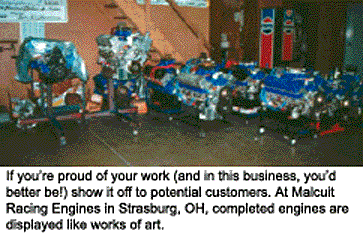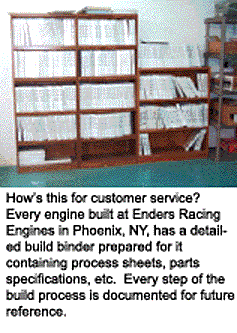Over the past few years, I’ve written quite a few articles on how to maintain your shop machinery, but now it’s time to talk about how to maintain something even more important: your relationships with your customers. Let’s face it…without customers we are out of business. You’ve probably heard the old saying, “all machine shops are alike and that’s just the way it is!” I don’t think so!
All machine shops are not created equal. How you treat your customers will have a big impact on how they treat you. In other words, if you treat your customers in a highly professional manner they will become better customers. Now, I am not talking about giving up profits to make this happen. Buying a customer’s business through deep discounts will not make him a better customer. As soon as you start charging a realistic market price, he’ll be off to the next guy who will give him a deal. And if you do give up too much …how can you expect to stay in business?
What I’m talking about is real service to your valued customers. Remember, if you’re not taking care of your customers, let me assure you your competition will. Even if you never hear a discouraging word directly from a customer, the result may still be a lost account that will be very difficult, if not impossible, to bring back. Do you have a customer who used to be a regular in your shop but now you don’t see him? Why is that? Did he move away? Why doesn’t he stop by anymore? What can you do?

One of the biggest rewards you can deliver to your customers is value. They must feel they are receiving value and service for what they are spending. It’s time to take those customers by the hand and show them what their money is buying. Open your shop for tours. The next time one of your really good customers brings in his or her work take them through your shop and introduce them to your shop foreman and your machinists. This lets the customer see the type of machines you have and also brings an appreciation for why you charge them what you do.
BUT, be sure your shop is presentable before you take your customers around. A dirty, disorganized shop won’t impress anyone. (For some ideas on showing off your shop, see my column, “Get Your Shop Together,” from the June 2004 issue of Engine Builder.)
If you’re unable to open your shop to the public because of insurance or liability issues, you can still show it off by installing a picture window between the showroom and the shop. Your customers can see what’s going on and you can keep an eye on the shop at the same time.
I am a firm believer in having finished work pieces up front for all to see. Add an information card next to each piece explaining what was done, by whom and why it was done. This by itself keeps customers interested in your shop even if you’re busy on the phone or with another customer and can’t get right to them. While they’re waiting they can read all the information you have about your shop and its abilities and, of course, your people.
I also suggest you call your shop from a different location – one your employees won’t recognize. Hear what your customers hear directly from your counter people. Call in just like a customer would, ask questions just like a customer, and grade their responses.
Do not use this as punishment; this information should only be used to improve how your people are dealing with customers. If your team needs improvement, set up a meeting and bring the service factor into that meeting, and as a team create a program that tells those customers that you want their experience to be the best possible.
If you have an outside sales representative, create a report card that he or she can drop off during sales calls. Ask your customers to fill it out and mail it back to you. Be honest on what you are trying to accomplish. Let your customers answer those hard questions about your quality and your service. Send a thank you to everyone who responds and create a plan to respond to their concerns.

I am a big believer in having an open house to show off your shop, your workplace, and of course your employees. This lets the customers know you do care about their business and it’s a good way to promote a new service or new machine you just got in the process.
Let me tell you a short story … I was at our local parts store the other day with a dead starter from my pickup. I had already used a hammer to convince the starter that it should work but it didn’t like that at all. So I had resigned myself to buying a new starter and was prepared for a big cash layout. I stopped in the shop to say “hi” to the cylinder head machinist and he directed me to their in-house starter expert. He bench tested the starter and confirmed it didn’t work. I grabbed the starter and was about to head up to the counter to make my purchase when he stopped me and took the starter out of my hand.
He said, “Hold on there, just because I said it didn’t work doesn’t mean you have to buy a new one.”
I was at a loss for words (which if you know me, is pretty rare). He then said that all it really needed was a new lug and wire from the solenoid to the starter motor and he could fix it in one minute or less. I thought he was pulling my leg so I went to the front counter to get the price for a new starter.
In less than a minute he said, “your starter is all fixed and you can be on your way.”
Just so you know, a rebuilt replacement starter for my truck was going to cost $130 exchanged. I asked the starter guy what I owed him and he said if I had more than fifty cents that would be too much. He gave me smile and my repaired starter and now all is well with my truck.
Now, I know that story has nothing to do with valve jobs or boring engines or anything to do with engine work. But, it has a lot to do with service. Here I was, money in hand, desperate to buy another starter to get my truck running so I could get to work and write this article. They could have charged me that $130 for the new starter and sent me on my way, but they didn’t.
It was the service from that auto parts store that saved my day and saved me money. I was impressed. Well, you can bet that I told that story to just about everyone for the next few days about what had happened and how impressed I was by their service. And let me assure you, it had a great impact on where I shop for my future automotive needs. The next time I go to that auto parts store I won’t even need a quote because they have earned my complete trust. And I’ll wager I sent them some new customers as a result of telling that story so many times.
Service is the key to your customers satisfaction. And if you do it really well they will tell no less than 10 other people just how good your service is (if you don’t do a good job, remember, they’ll tell even more people – even if they never say a word to you). I can’t stress this enough; if your customers are telling their friends and families how good you are it’s advertising you can’t buy – that’s the kind of advertising you can’t afford not to have.
It’s the silent customer who walks away. A silent customer is a lost customer! A lost customer is looking for somebody else to service his or her business. Keep the customer!
See you in the shop!













